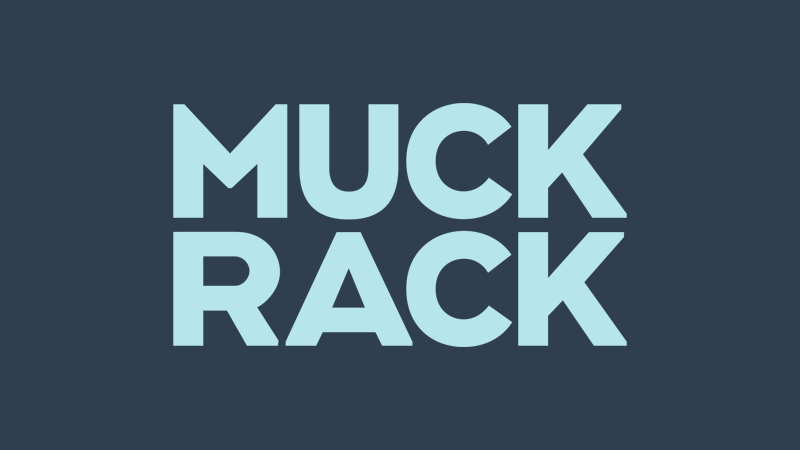There are over 33,000 full-time newsroom employees in the United States, plus thousands of freelance writers and contributors. As PR pros, we know the key to getting good press is pitching the right story to the right media contacts. But how do we find the right reporters among the tens of thousands?
At BIGfish, we use several media databases, including Cision, Muck Rack and MyMediaInfo, to help us find and track reporters. But not all databases are created equal. Here are strengths and weakness of each one.
Cision:

What is it?
Cision is a public relations software that can be used to build media lists, distribute press releases, manage PR campaigns, monitor news coverage and analyze reports.
How many contacts are listed?
Cision boasts a media database of more than 1.6 million contacts and outlets.
What we love about it:
- Cision offers in-depth outlet profiles that include the history of the news outlet, its UVM/circulation, and target audience as well as an editorial profile, which comes in handy when creating backgrounders for clients.
- Cision’s database is extremely expansive; it includes both large, top-tier outlets, as well as smaller industry publications, local news outlets, bloggers and social media influencers.
- Pitching notes are included with each reporter’s profile, making it easier for the whole team to know exactly how to get a pitch to a specific reporter and ensure they read it. Cision also alerts you to who at the outlet is not a contact to pitch.
- The search function on Cision is great. You can specify your search by keywords, beats, locations, DMA and outlet. The beats/topics are extremely detailed, making it simple to find reporters that cover the topic you are researching.
- You can also export media lists with ease in Cision and customize the information you would like on the list. For example, you can choose to include email instead of contact location and title over beats covered.
What frustrates us:
- Some reporter information is outdated in the Cision database. It’s frustrating when your email bounces back after you send a pitch to a reporter you spent time researching.

- When you click on a reporter’s profile from your search, it doesn’t open in a new window, which makes it difficult to toggle between reporters and sometimes results in deleting your search.
- Though it is great that the Cision database is so expansive, searches can easily become cluttered with too many irrelevant small outlets.
- This last frustration might be petty, but WHY DOES IT SCROLL SO FAST?! The scroll function on Cision is SUPER sensitive, which sometimes means you scroll past useful contacts.

Muck Rack:
What is it?
Muck Rack is used by both reporters and PR folk alike and allows reporters to create custom profiles that link their recent articles and twitter accounts. Muck Rack also tracks campaigns, monitors for company mentions and sends alerts about potential opportunities and crises.
How many contacts are listed?
Muck Rack’s database has over 100,000 profiles comprised of top-tier journalists, global PR agencies and Fortune 500 companies, in addition to many boutique agencies and entrepreneurs.
What we love about it:
- Similar to Cision, Muck Rack offers in-depth profiles on news outlets. What sets it apart is that the design makes it much easier to grab specific information, like UVM, at a glance.
- Because reporters can customize their profiles, it’s easy to find out more about their likes and dislikes, beyond just what their beats are, and see information like how they want to be pitched. For example, a reporter might list that they are a dog lover or that they are a parent, making tailoring pitches easier.
- You can see reporters’ most recent tweets and articles right on their Muck Rack profile. This makes it simple to see what topics they are writing about or find interesting.
- Muck Rack’s article database is also a helpful tool because you can search for keywords, like “Obamacare” or “home security,” and find recent news stories that fit your topic, along with the reporter’s information.
- A small function in Muck Rack that makes all the difference? When you click on a reporter’s profile it opens in a new tab. This makes it easy to move between tabs to compare reporter profiles while keeping your original search in tact.
What frustrates us:
- Unlike Cision, it is difficult to export more than one reporter’s information at a time on Muck Rack. You can create media lists within the site, but it doesn’t capture as much relevant information as Cision.
- While it is easy to find contacts at large, top-tier outlets, smaller outlets, such as industry publications and blogs, are often not listed in the database.
- The list of beats that reporters can add to their profile is pretty limited on Muck Rack. Most that are available are catch-all search terms, which make it difficult to know the exact subject matter that reporters are covering by searching by beat alone.
MyMediaInfo:


What is it?
MyMediaInfo is owned by Nasdaq and offers global press release distributions and up-to-date media contacts, as well as monitoring services and analytics.
How many contacts are listed?
There are approximately 400,000 contacts in the MyMediaInfo database that are updated and maintained by over 100 specialized analysts.
What we love about it:
- Searching for local outlets is easy on MyMediaInfo. The site allows you to specify by state, county and even town, then drill down further by publication type or size.
- Each reporter’s profile tells you when it was updated last, which makes it easier to know that you are contacting the reporter at their current outlet.
- Although the interface is a bit clunky, MyMediaInfo offers a variety of search criteria, like outlet location, tier 1 outlets, publication focus, contact title and audience type. You can also search for outlets “similar” to one you’re looking at. For example, search for an outlet with a similar audience size and type to the one you’er looking at.
- Exporting media lists is simple on MyMediaInfo. By simply checking off the names you want to appear on the list MyMediaInfo will generate an Excel spreadsheet of the the contact’s name, outlet, email, and other relevant information.
What frustrates us:
 The interface on MyMediaInfo is a bit outdated and clunky compared to the other two databases, which can sometimes make it difficult to navigate.
The interface on MyMediaInfo is a bit outdated and clunky compared to the other two databases, which can sometimes make it difficult to navigate.- Sometimes when you filter your search by beats or location, outliers that don’t match the search criteria can still find their way into your results.
- Unlike Muck Rack, MyMediaInfo doesn’t allow you to open reporter profiles in new tabs, making it difficult to quickly review several profiles at once. Plus – don’t click the back button on your browser or you’ll lose your saved search.
- Besides basic information about the reporter you are looking at, MyMediaInfo doesn’t provide you with a more indepth profile like Cision and Muck Rack do. For example, they don’t link to recent articles in the search page, making it difficult to quickly see what the reporter covers.
These media databases each have areas they excel at (Cision’s pure size, Muck Rack’s design and MyMediaInfo’s accuracy), but the advantages of Cision and Muck Rack far outweigh those of MyMediaInfo, which is why we use the power combo of Muck Rack and Cision.
What is your favorite media database for PR? Share your thoughts in the comments below or tweet us at @BIGfishPR!

